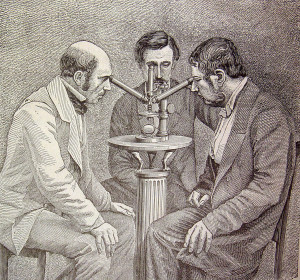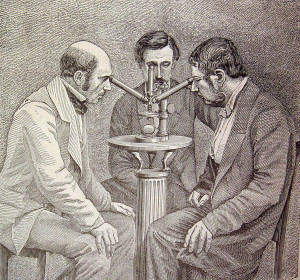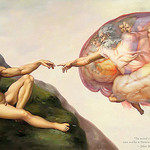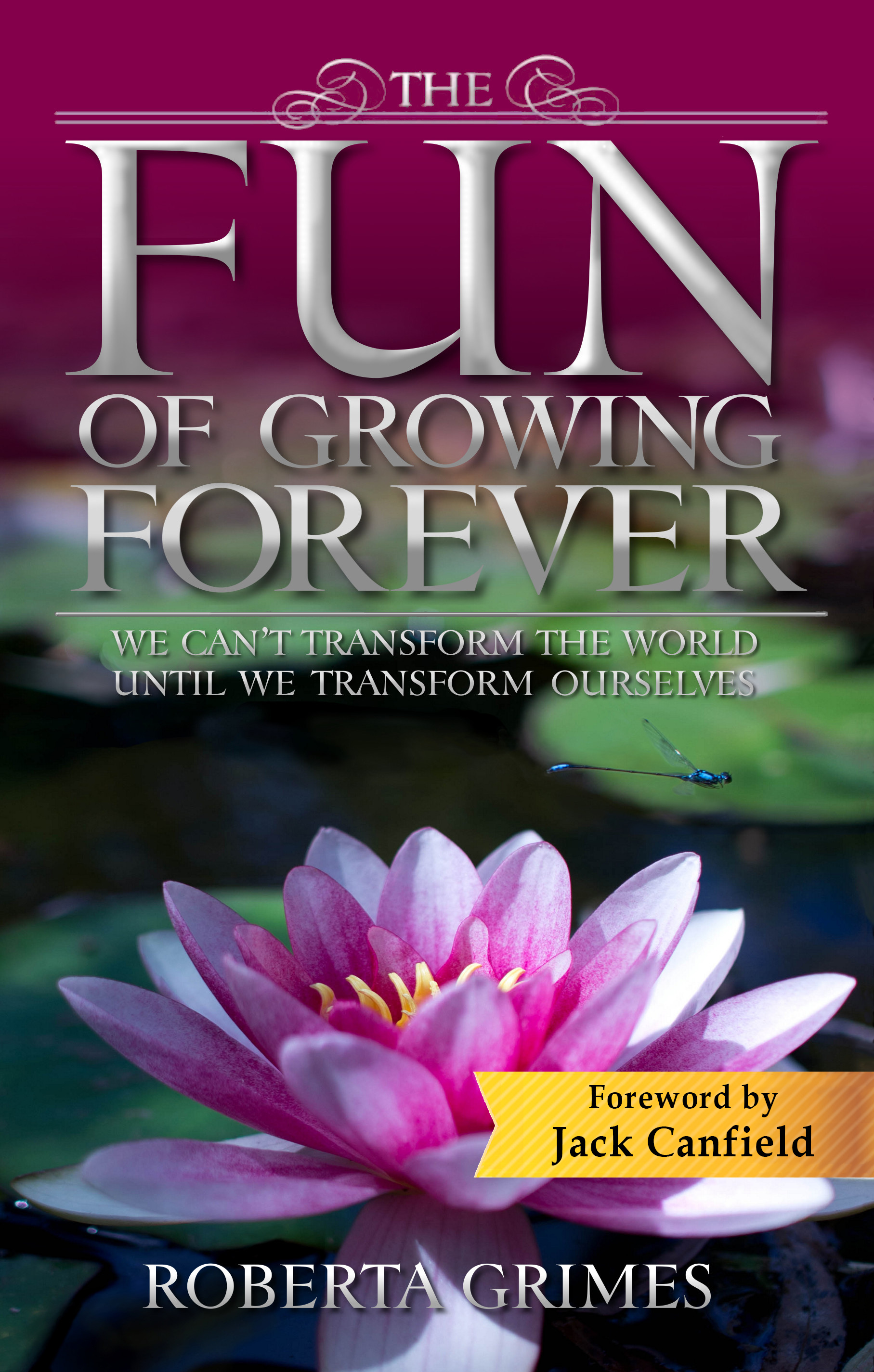I have just read the most foolish bit of nonsense that I ever have seen in  Scientific American. And given the fact that most issues of my favorite magazine include further examples of the resolute cluelessness to which mainstream science has reduced itself, to call this article perhaps the most epic bit of ignorance ever written is to say something remarkable about it.
Scientific American. And given the fact that most issues of my favorite magazine include further examples of the resolute cluelessness to which mainstream science has reduced itself, to call this article perhaps the most epic bit of ignorance ever written is to say something remarkable about it.
Entitled How Come Some People Believe in the Paranormal?, this piece lumps together UFOs, Bigfoot, the New World Order, and all psi phenomena into one hilarious sideshow. No summary I could give you would properly encapsulate the Luddite thinking of this author, and of the French investigators whose work is his subject. What they have done is the rough equivalent of our inviting investigators to step outside so we can demonstrate that the earth is flat; then filling a balloon with helium and letting it go; and then assuming that these two experiments have proven that all scientific theories are baseless. We proceed directly to trying to figure out what mental flaws might have prompted any scientist ever to have believed what is so unbelievable as the thought that the Earth might be round and not flat and it attracts objects to itself.
I do not exaggerate. That is these researchers’ mission. They investigate none of the targeted phenomena. Instead, they assume that since their belief-system of materialism declares them all to be impossible, the fact that you and I and “more than 71% of Americans believe in ‘miracles,’ 42% of Americans believe that ‘ghosts’ exist, (and) 41% think that ‘extrasensory perception’… is possible,” then clearly something must be wrong with us. (Those dismissive quotation marks are in the article. They give you a flavor of the piece.)
Of course, if any of these folks had undertaken even a modest search of the literature  beyond their narrow world of materialism, they would have found so much evidence for miracles, ghosts, extrasensory perception, remote viewing, communication through mediums, and life after death that they would have realized that people believe in such things for the same reason that research scientists believe that matter is composed of atoms: there is abundant and well-documented evidence of these phenomena. But scientists generally see material and non-material theories as forever at war with one another, never imagining that they might both be right.
beyond their narrow world of materialism, they would have found so much evidence for miracles, ghosts, extrasensory perception, remote viewing, communication through mediums, and life after death that they would have realized that people believe in such things for the same reason that research scientists believe that matter is composed of atoms: there is abundant and well-documented evidence of these phenomena. But scientists generally see material and non-material theories as forever at war with one another, never imagining that they might both be right.
So to figure out how you and I could believe in things that the scientific dogma of materialism declares to be impossible, a set of experiments was done. (Indeed, to reassure fellow scientists that these investigators were not committing the sin of actually investigating the phenomena themselves, the reporter informs us about the psi experiment that “the experiment was rigged of course.”) Inevitably, conclusions were drawn about differences between the minds of believers and non-believers. It was something about some folks being “intuitive thinkers,” while others are “reflective thinkers.”
For those of us who are past our shock at the self-willed cluelessness of modern science, wryly amusing moments abound. The author lumps those who have investigated phenomena that he himself is not allowed to consider without risking his mainstream scientific career with people who are sure that a secret, evil cabal must run the world. And he won’t even let us enjoy what he sees as our naive ignorance. He assures us that it is not harmless. He says, “You might ask: Why kill the magic? Not everything needs to be explained by science. Yet misinformation of this kind can be harmful. For example, in a recent study, I found that merely exposing people to a 2-minute conspiracy video clip significantly decreases acceptance of science, civic engagement, and overall pro-social inclinations. I call this the ‘conspiracy-effect.’ Although I did not measure cognitive style, non-reflective thinkers may be especially vulnerable to such misinformation.” So the fact that you and I are convinced that evidence supports powers of the mind that scientists still refuse to consider makes us likely fools for every conspiracy theory and probably irrational, anti-social grumps.
 The harm that science does to its own credibility by stubbornly clinging to materialism as a dogma is something to which, incredibly, nearly all working scientists still seem oblivious. They are blind to their own enormous blind spots; they are clueless about their own confusions.
The harm that science does to its own credibility by stubbornly clinging to materialism as a dogma is something to which, incredibly, nearly all working scientists still seem oblivious. They are blind to their own enormous blind spots; they are clueless about their own confusions.
For example, scientists acknowledge that about 27% of what they can demonstrate exists is composed of matter that will not interact with material light. Non-material matter takes up at least five times as much space as does the whole physical universe, but scientists cannot explain what it is. They can’t even figure out how to investigate it! And only with the greatest reluctance do they ever admit their massive ignorance. Nor do they realize that their inability even to conceive of what dark matter and dark energy might be could mean that their accepted theories might be missing something big.
As further evidence of how scientists’ self-imposed dogma of materialism keeps jabbing them with inconvenient facts, recent experiments suggest that quantum mechanics is fully as inconsistent with Newtonian physics as they long had feared that it might be. Scientists keep finding evidence that indeed the whole particle theory of matter may need revision. And weird, unexpected things keep happening that throw core scientific theories to the winds.
So mainstream scientists’ view of reality is nothing like the certain lock on facts that they want us to believe it to be. But never do they budge from their dogma-based belief that everything that exists must be material, even though that theory has long since been demonstrated to be unbelievable. You may wonder how long this can continue. How much more time will it take before their beloved scientific dogma of materialism will have led scientists so far into the weeds that they will feel forced to make a course correction? It is hard to know. And meanwhile, of course, the toll that their insistence on believing what is unbelievable takes on all of humankind in terms of absurd assumptions and unnecessary fears is beyond incalculable.
Afterlife researchers cannot yet supply answers to every question that still flummoxes mainstream scientists. But ours is a field of research in which progress of late has been accelerating, so it won’t be long before we will be able to supply a great many of those  answers. Will they accept them? That is hard to say. For certain, the pain of having to go back and acknowledge a full century of largely wasted scientific effort based on an erroneous core belief in materialism is going to be great.
answers. Will they accept them? That is hard to say. For certain, the pain of having to go back and acknowledge a full century of largely wasted scientific effort based on an erroneous core belief in materialism is going to be great.
Our poor, befuddled writer, still trying to maintain his illusion that his theories make objective sense, opines that, “Although our intuition serves us well in some cases, we may all benefit from a little more reflective thinking before we decide to accept uncanny explanations about the nature of reality.” Sadly, on this point he is exactly right.


































